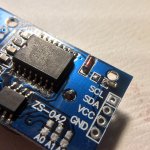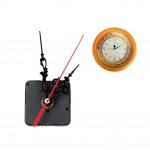Tvmender
Active member
Hi All
I am trying to reduce the hardware needed to run my Nixie Clocks by using a PICAXE to generate the 1Hz clock signal.
I know there is the I2C option with an accurate external clock source but I want to modify an existing clock which uses an old 16C84 I built back in my college days so no room for "luxuries" unfortunately.
I know this will involve using an externally clocked PICAXE but whats best? How accurate are internal delays?
Sorry if this is a very noob question, I haven't made anything which requires such accuracy until now.
Thanks!
I am trying to reduce the hardware needed to run my Nixie Clocks by using a PICAXE to generate the 1Hz clock signal.
I know there is the I2C option with an accurate external clock source but I want to modify an existing clock which uses an old 16C84 I built back in my college days so no room for "luxuries" unfortunately.
I know this will involve using an externally clocked PICAXE but whats best? How accurate are internal delays?
Sorry if this is a very noob question, I haven't made anything which requires such accuracy until now.
Thanks!




